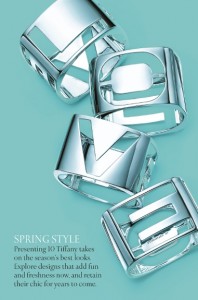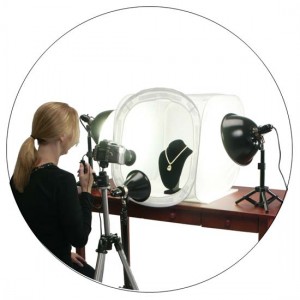 In order for a graphic designer to stay alive in today’s cutthroat market competition, one has to be diverse and multi-talented. Many designers prefer sticking to their comfort zones. For instance, a logo designer would fear trying out developing code. Similarly, print designers probably wouldn’t fancy learning CSS, PHP or XHTML to develop websites. Always strive to expand your design skills and broaden your horizon. The design industry no longer lives in a tunnel of specialized expertise. Today’s “marketable” designer is one who has demonstrated expertise in multiple design and media disciplines.
In order for a graphic designer to stay alive in today’s cutthroat market competition, one has to be diverse and multi-talented. Many designers prefer sticking to their comfort zones. For instance, a logo designer would fear trying out developing code. Similarly, print designers probably wouldn’t fancy learning CSS, PHP or XHTML to develop websites. Always strive to expand your design skills and broaden your horizon. The design industry no longer lives in a tunnel of specialized expertise. Today’s “marketable” designer is one who has demonstrated expertise in multiple design and media disciplines.
Archimedia’s Top Photoshop Tips
1. Always draw the basic object in a mid-tone gray. Whether you then add highlights and shadows with the Dodge and Burn tools, or adjust the contrast with Curves, or add a metallic effect with Layer Styles, you only need be concerned about the luminosity: there’s too much opportunity for color images to go haywire. Add the color later, when the basic object has been built.
2. Duplicate, duplicate, duplicate. Make copies of your layers after each successful stage. It can be frustrating to get near the end and find there was a mistake early on in the process–but if you have an earlier version to return to, you can correct your errors far more easily.
3. Name each layer as you create it. If you use a filter, consider naming it with the settings you used – such as “Unsharp Mask, 2, 150, 0”–so you know how the effect was achieved.
4. Always experiment on a copy. Photoshop is ideal for tinkering and trying out new ideas–but make sure you keep a copy of the original before you start down an unknown path.
5. Be creative with filters. The Plastic Wrap filter doesn’t just wrap objects in plastic, it can be used to create liquids of all sorts. The Clouds filter may produce lousy clouds, but it’s a great random texture generator. And give the Wave filter another chance, it’s better than it looks.
6. Don’t erase anything. Use a Layer Mask instead. That way, you can always reveal pat of a layer you’d previously hidden. Once it’s erased, it’s gone.
7. Rather than applying a Curves or Color Balance adjustment to a layer, use an Adjustment Layer instead. The effect will be the same, except that we can go back and change the adjustment at any time–or copy it to a new layer.
8. Learn to use the Pen tool. It’s the single scariest Photoshop tool, and many users just give up on it. Take a day to master it and you’ll value it for the rest of your life.
9. Don’t forget the shadows. Shadows on objects, shadows beneath objects, shadows on the wall behind objects. Once the composition is finished, it’s the shadows that really bring it to life.
10. Convert layers to Smart Objects in complex compositions. Each time an object is scaled, rotated or distorted, some quality is lost. With Smart Objects, we can tinker as much as we like without losing any quality. It can be heartbreaking to see an image looking soft or ragged, simply because we changed our minds one time too many.
12 of the Worst Employees Types
 In any organization, one should never expect or force everyone to like everyone. The strength and success of any organization is the cohesiveness and teamwork of its employees. However, there are certain employee types that we feel pose a disruptive effect to any cohesion within a company. Now, executives and managers can and will overlook all sorts of weird and quirky behavior as long as the job gets done. But certain types of employees can’t seem to stop themselves from creating more problems than they solve. For them, the dollar amount on their foreheads just isn’t worth it.
In any organization, one should never expect or force everyone to like everyone. The strength and success of any organization is the cohesiveness and teamwork of its employees. However, there are certain employee types that we feel pose a disruptive effect to any cohesion within a company. Now, executives and managers can and will overlook all sorts of weird and quirky behavior as long as the job gets done. But certain types of employees can’t seem to stop themselves from creating more problems than they solve. For them, the dollar amount on their foreheads just isn’t worth it.
We don’t generally like stereotypes but we are going to make an exception for these 12 behavioral types that we would NEVER hire or would not be working for us long.
How many of these employee types do you work with!
- I’m important. Takes themselves too seriously. Anytime you need something, they have to check his schedule or who-knows-what and get back to you.Or they have all sorts of questions and concerns, every little bit of minutiae they can think of just to sound important. It’s so annoying that, after a while, you just go somewhere else.
- The persistent negator. Some people are all about why things can’t be done or shouldn’t be done a certain way. They’ve always got reasons why something is wrong but never any good suggestions on how to do it differently or better. They’re always trying to stir up trouble or a debate over nothing. Those people just suck the energy out of organizations.
- Mr. Know-it-all. People who think they know it all are annoying to those of us who do. Old joke. But seriously, the most accomplished executives are always aware of how little they know; that asking questions is far more important than knowing answers. That just comes from experience. So when the “smartest person in the room” acts like they has all the answers and we know they don’t, they loses credibility. Not a good thing.
- The brick wall. I don’t know why, but some people are so stubborn, so inflexible, if they don’t do things exactly a certain way — their way — you’d think the whole world is going to fall apart. It gets to the point where they’re actually intimidating to work with, so you just give up. Maybe that’s the point.
- High maintenance, high anxiety. It’s one thing when you’re new to a job and need some handholding to get going. However, some employees stay that way. They have zero self-confidence, are full of angst, and need to be told exactly what to do and how to do it and confirm every little thing with you for fear they might actually get it wrong and be held accountable. It’s sad, but it’s also a real problem.
- The filibusterer. It’s easy to spot these people in meetings. They’re the ones who always have to know why we have to do it this way or that way and why not the other way. They’re really just wasting everyone’s time to hear the sound of their own voice — or so they don’t have to actually do any work.
- In everybody’s business. Everywhere I’ve ever worked there’s been an employee who’s got to be involved in everything. Outwardly, they appear helpful and eager to assist. They want to help everybody do everything. Everything except actual work, that is. After a while you realize it’s all just distraction, to feel important, or stay entertained while getting absolutely nothing done.
- Surprise! You give them a task with plenty of time to complete it. When the task comes due, you find there is much of the work is missing or incomplete. When you confront the employee, all they have is excuses. A real mess!
- “Trust me.” When an employee that you don’t know well enough to actually trust says “trust me” it your antennas should go up. If I trust you, you don’t have to say it. If I don’t yet, you have to earn it. Saying it just makes one think of all the reasons why they don’t or shouldn’t.
- “The Snitch” Is there an individual that you work with who is constantly running to management complaining or snitching about fellow employees? Beware management! These are the employees that usually have something to hide and use the fine art of “focal misdirection” to take any attention off of themselves.
- “The Busy-Bee Illusion” This is the employee that always appears to be in “high gear”. They always want to be noticed as running around like the proverbial chicken with their head cut off. However, they always beg the question; “What exactly has this person accomplished?
- “It’s the principle.” Whenever someone says, “It’s the principle” at work, get nervous. When they say things, like “I don’t understand why John gets all the accolades and promotions instead of me. It wouldn’t bother me, but it’s the principle…” That’s just code for someone who feels entitled to something they apparently didn’t earn.
If you have multiple of these employee types in your organization, well……
Archimedia’s Top Jewelry Photography Tips
 The keys to good jewelry photography are sharpness, lighting, exposure, and in the case of gemstone photography, trying to create some sparkle. (photo left is from Tiffany’s Spring mailer)
The keys to good jewelry photography are sharpness, lighting, exposure, and in the case of gemstone photography, trying to create some sparkle. (photo left is from Tiffany’s Spring mailer)
Adding sparkle to faceted gems… A light tent provides nice soft lighting for jewelry and makes for a pleasing image. However, the light tent may not provide the direct lighting necessary to “light up” faceted gemstones. Faceted gemstones like diamonds need to be illuminated by a light source that is positioned at nearly the same place as the camera. Don’t use the on-camera flash does not lead to good jewelry photos. Not only is the camera’s flash too bright at such a close distance, but it is probably in the wrong position to actually light up the jewelry properly. On camera flash will also create harsh and distracting shadows.
 Two lights are normally positioned to sides of the Light tent, which diffuses the light and eliminates glare. These lights provide the main lights for the piece of jewelry. We prefer daylight balanced compact fluorescent bulbs for lighting .
Two lights are normally positioned to sides of the Light tent, which diffuses the light and eliminates glare. These lights provide the main lights for the piece of jewelry. We prefer daylight balanced compact fluorescent bulbs for lighting .- The third light, “the sparkler” light is positioned to shine directly into the gemstone to illuminate the stone. Because this light is not diffused by the light tent, it needs to be a weaker light than the side lights. You will need to move this light until you see the gem light up. Then move the light stand to keep the light in that position. (Make sure you are looking through the camera’s viewfinder when positioning the sparkler light). The “sparkler” light is the third light, and the key to having properly lit faceted gemstone jewelry. This light must be positioned so that you see the stones sparkle
- Good jewelry photography needs sharp, crisp focus. It is worth getting out your camera’s manual to find out how to put the camera in “spot focus” mode. The normal focus mode of digital cameras is some sort of average focus mode. That means that the camera will look at a wide area of a scene and base the focus on that area.
- Another key to a sharp image is a tripod. It is essential to use a good sturdy tripod or similar camera support when shooting jewelry.
Archimedia’s top fashion photography tips
 Every fashion and commercial ad photographer has their favorite techniques and equipment. We have found through the years that the simplest of equipment can produce the highest degree of artistic results. Here are a few fashion and commercial ad photography tips from our team of fantastic photographers.
Every fashion and commercial ad photographer has their favorite techniques and equipment. We have found through the years that the simplest of equipment can produce the highest degree of artistic results. Here are a few fashion and commercial ad photography tips from our team of fantastic photographers.
- Our favorite lens is the 50MM lens no matter whether it is a close up or wide shot. This lens makes you analyze your shot and makes you physically move to frame the shot. (at times we also use a 24MM 2.8)
- Research your location either the day before or two hours prior to the photo shoot to make sure there are both no surprises and to foster creative inspiration.
- Before you take the shot, assemble in your head what you envision the end product is going to look like.
- Lighting – Start with one light (key light) – yes, one light! – and play around with it to see where shadows falls. Remember, mood is created with shadows.
- Play around with your exposure. Look at your meter, when it tells you that you have the correct exposure, try stepping your exposure down or up. The results may pleasantly surprise you.
- Take plenty of shots! Remember, you are never judged on the shots that you throw away, only on the ones that you keep.
- « Previous Page
- 1
- …
- 14
- 15
- 16
- 17
- 18
- …
- 54
- Next Page »

